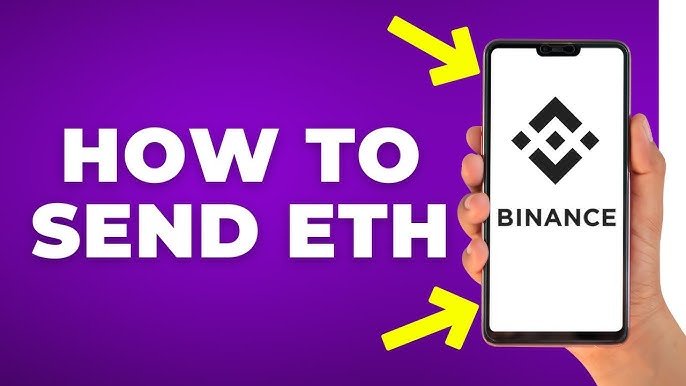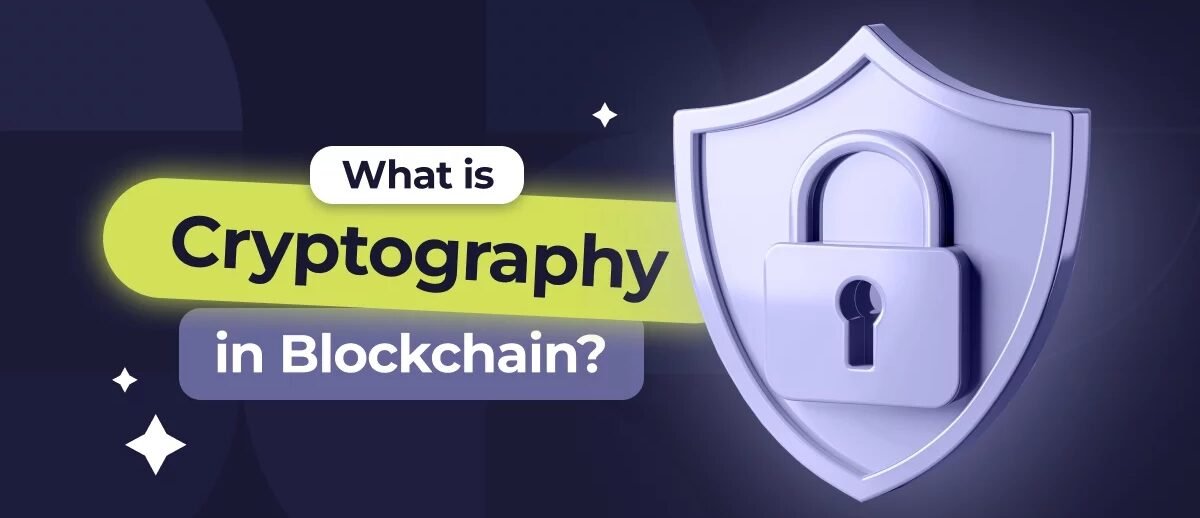Blockchain networks like Bitcoin and Ethereum handle billions in transactions, but how do they stay secure without a central authority? The answer lies in encryption techniques—powerful cryptographic tools that protect transactions from tampering and theft. This beginner-friendly guide explains the key encryption methods used in blockchain, making them easy to understand for everyone. Whether you’re a developer or a curious reader, let’s explore how encryption keeps your crypto safe!

Why Encryption Is Crucial for Blockchain
Blockchains are decentralized, meaning anyone can join the network, including potential hackers. Encryption ensures:
- Transaction Security: Only authorized users can send funds.
- Data Integrity: Transaction records can’t be altered.
- User Privacy: Identities remain pseudonymous, protecting personal details.
Without encryption, blockchains would be vulnerable to fraud, double-spending, and data breaches.
Key Encryption Techniques in Blockchain
Blockchain relies on several encryption methods to secure transactions. Let’s break them down in simple terms, with examples to show how they work.
1. Hashing
Hashing transforms data (like a transaction) into a fixed-length string called a hash, which acts like a digital fingerprint. Hashes are unique, irreversible, and detect even the tiniest changes in data.
How It’s Used:
- Block Linking: Each block contains the hash of the previous block, creating a tamper-proof chain.
- Transaction Integrity: Hashes ensure transaction data hasn’t been modified.
Example: Bitcoin uses SHA-256. Try hashing in Node.js:
const crypto = require('crypto');
const transaction = "Send 1 BTC to Alice";
const hash = crypto.createHash('sha256').update(transaction).digest('hex');
console.log(hash); // Outputs a unique 64-character hash

2. Public-Key Encryption
Public-key encryption uses a pair of keys: a public key (shared openly) and a private key (kept secret). It’s like a locked mailbox—anyone can send a message using the public key, but only the private key holder can access it.
How It’s Used:
- Wallet Addresses: Public keys generate blockchain addresses for receiving funds.
- Transaction Authorization: Private keys sign transactions to prove ownership.
Example: Ethereum uses ECDSA (Elliptic Curve Digital Signature Algorithm) for key pairs.
3. Digital Signatures
A digital signature is a cryptographic proof that a transaction was authorized by the sender’s private key. It’s like signing a check to confirm it’s from you.
How It’s Used:
- Verification: Nodes check signatures to ensure transactions are legitimate.
- Non-Repudiation: Signers can’t deny authorizing a transaction.
Example: Sign a transaction with Ethers.js:
const ethers = require('ethers');
const wallet = new ethers.Wallet('YOUR_PRIVATE_KEY');
const message = "Transfer 0.5 ETH";
const signature = await wallet.signMessage(message);
console.log(signature); // Outputs a verifiable signature
4. Merkle Trees
A Merkle tree organizes transaction hashes into a hierarchical structure, enabling efficient verification of large datasets. It’s like a summary table for all transactions in a block.
How It’s Used:
- Scalability: Nodes verify thousands of transactions by checking the Merkle root.
- Light Clients: Mobile wallets use Merkle trees to verify transactions without downloading the full blockchain.
Bitcoin and Ethereum rely on Merkle trees for fast, secure transaction validation.
How Encryption Secures a Blockchain Transaction
Let’s walk through a typical transaction to see encryption in action:
- Creating the Transaction: You send 1 ETH to Bob. Your wallet signs the transaction with your private key, creating a digital signature.
- Broadcasting: The transaction, including its hash and signature, is sent to the network.
- Verification: Nodes verify the signature using your public key and check the transaction’s hash for integrity.
- Block Inclusion: Valid transactions are grouped into a block, hashed into a Merkle tree, and linked to the previous block’s hash.
- Consensus: Miners (PoW) or validators (PoS) finalize the block, ensuring immutability.
Any attempt to alter the transaction breaks the hash chain, alerting the network.

Practical Example: Building a Secure Transaction DApp
Let’s create a simple Ethereum DApp that uses encryption to securely transfer ETH. We’ll use Solidity for the smart contract and Ethers.js for the front-end.
Step 1: Set Up the Environment
Install the required tools:
- Node.js: Download from nodejs.org.
- Hardhat: Install via
npm install --save-dev hardhat. - Ethers.js: Install via
npm install ethers. - MetaMask: Install from metamask.io.
Create a Hardhat project:
npx hardhat
npm install @openzeppelin/contracts
Step 2: Write a Secure Transaction Contract
Create a contract in contracts/SecureTransfer.sol that verifies digital signatures for transfers:
// SPDX-License-Identifier: MIT
pragma solidity ^0.8.0;
contract SecureTransfer {
mapping(address => uint256) public balances;
event Transfer(address indexed from, address indexed to, uint256 amount);
function deposit() external payable {
balances[msg.sender] += msg.value;
}
function secureTransfer(address to, uint256 amount, bytes memory signature) external {
bytes32 messageHash = keccak256(abi.encodePacked(msg.sender, to, amount));
bytes32 ethSignedMessageHash = keccak256(abi.encodePacked("\x19Ethereum Signed Message:\n32", messageHash));
address signer = recoverSigner(ethSignedMessageHash, signature);
require(signer == msg.sender, "Invalid signature");
require(balances[msg.sender] >= amount, "Insufficient balance");
balances[msg.sender] -= amount;
balances[to] += amount;
emit Transfer(msg.sender, to, amount);
}
function recoverSigner(bytes32 messageHash, bytes memory signature) internal pure returns (address) {
(uint8 v, bytes32 r, bytes32 s) = splitSignature(signature);
return ecrecover(messageHash, v, r, s);
}
function splitSignature(bytes memory sig) internal pure returns (uint8, bytes32, bytes32) {
require(sig.length == 65, "Invalid signature length");
bytes32 r;
bytes32 s;
uint8 v;
assembly {
r := mload(add(sig, 32))
s := mload(add(sig, 64))
v := byte(0, mload(add(sig, 96)))
}
return (v, r, s);
}
}
This contract allows users to deposit ETH and transfer it securely by verifying a digital signature.
Step 3: Deploy the Contract
Create a deployment script in scripts/deploy.js:
const hre = require("hardhat");
async function main() {
const SecureTransfer = await hre.ethers.getContractFactory("SecureTransfer");
const transfer = await SecureTransfer.deploy();
await transfer.deployed();
console.log("SecureTransfer deployed to:", transfer.address);
}
main().catch((error) => {
console.error(error);
process.exitCode = 1);
});
Configure hardhat.config.js for Sepolia (use an API key from Infura or Alchemy):
require("@nomicfoundation/hardhat-toolbox");
module.exports = {
solidity: "0.8.0",
networks: {
sepolia: {
url: "https://sepolia.infura.io/v3/YOUR_API_KEY",
accounts: ["YOUR_PRIVATE_KEY"]
}
}
};
Deploy with npx hardhat run scripts/deploy.js --network sepolia. Note the contract address.
Step 4: Build a React Front-End
Create a React app to interact with the contract:
npx create-react-app secure-transfer-dapp
cd secure-transfer-dapp
npm install ethers
Replace src/App.js with:
import { useState } from 'react';
import { ethers } from 'ethers';
import './App.css';
const contractAddress = 'YOUR_CONTRACT_ADDRESS';
const contractABI = [/* YOUR_CONTRACT_ABI */]; // From Hardhat artifacts
function App() {
const [account, setAccount] = useState(null);
const [to, setTo] = useState('');
const [amount, setAmount] = useState('');
const connectWallet = async () => {
if (window.ethereum) {
const provider = new ethers.BrowserProvider(window.ethereum);
const accounts = await provider.send('eth_requestAccounts', []);
setAccount(accounts[0]);
} else {
alert('Install MetaMask!');
}
};
const deposit = async () => {
if (!account) return;
const provider = new ethers.BrowserProvider(window.ethereum);
const signer = await provider.getSigner();
const contract = new ethers.Contract(contractAddress, contractABI, signer);
await contract.deposit({ value: ethers.parseEther('0.1') });
alert('Deposit successful!');
};
const transfer = async () => {
if (!account || !to || !amount) return;
const provider = new ethers.BrowserProvider(window.ethereum);
const signer = await provider.getSigner();
const contract = new ethers.Contract(contractAddress, contractABI, signer);
const message = ethers.solidityPackedKeccak256(
['address', 'address', 'uint256'],
[account, to, ethers.parseEther(amount)]
); const signature = await signer.signMessage(ethers.getBytes(message)); await contract.secureTransfer(to, ethers.parseEther(amount), signature); alert(‘Transfer successful!’); }; return (
Secure Transfer DApp
{!account ? ( Connect Wallet
) : (
Connected: {account}Deposit 0.1 ETH
Transfer ETH
setTo(e.target.value)} />
setAmount(e.target.value)} /> Transfer
)} ); } export default App;
Add styling in src/App.css:
.App {
text-align: center;
padding: 50px;
font-family: Arial, sans-serif;
}
input {
padding: 10px;
margin: 10px;
width: 200px;
}
button {
padding: 10px 20px;
margin: 10px;
cursor: pointer;
background-color: #0288d1;
color: white;
border: none;
border-radius: 5px;
}
button:hover {
background-color: #0277bd;
}
Run with npm start. Connect MetaMask to Sepolia, deposit test ETH (get some from sepoliafaucet.com), and transfer funds securely using digital signatures.

Benefits of Encryption in Blockchain
Encryption techniques provide critical advantages:
- Robust Security: Protects transactions from unauthorized access or tampering.
- Trustless System: Users rely on cryptographic proofs, not intermediaries.
- Scalability Support: Merkle trees enable efficient verification for large networks.
These benefits make blockchains reliable for finance, supply chains, and more.
Challenges of Encryption in Blockchain
Encryption isn’t without challenges:
- Complexity: Implementing secure encryption requires expertise to avoid errors.
- Performance Overhead: Cryptographic operations can slow down transactions.
- Key Management: Losing a private key means losing access to funds permanently.
Use audited libraries like OpenZeppelin and educate users on secure key storage to mitigate these issues.
Tips for Developers Implementing Encryption
To build secure blockchain applications:
- Use Trusted Libraries: Leverage Ethers.js or Web3.js for reliable cryptographic functions.
- Audit Contracts: Scan for vulnerabilities with MythX or Slither.
- Test Extensively: Simulate attacks on testnets using Hardhat.
- Educate Users: Provide clear instructions on managing private keys safely.
These practices ensure your DApp is secure and user-friendly.
Resources for Learning More
Deepen your encryption knowledge with these resources:
- Ethereum Docs: Cryptography basics at ethereum.org.
- Bitcoin Wiki: Encryption techniques at bitcoin.it.
- Blockchain Communities: Join discussions on Ethereum Stack Exchange or Bitcoin forums.
Stay curious to master blockchain security.
Conclusion
Encryption techniques like hashing, public-key encryption, digital signatures, and Merkle trees are the foundation of secure blockchain transactions. By building a secure transfer DApp, you’ve seen how these methods protect funds and ensure trust in decentralized networks. Keep exploring encryption tools and best practices to create robust DApps, and share your secure blockchain ideas in the comments below!






















